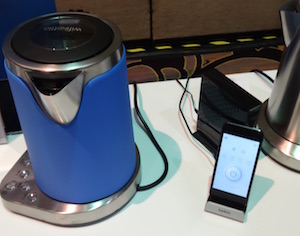
How hard can it be?
The trade show originally named the Consumer Electronics Show, and then rebranded as International CES and now called simply CES, put on by the trade group formerly known as the Consumer Electronics Association, now called the Consumer Technology Association, kicks off in Las Vegas on Monday.
A lot of the pre-show buzz, judging by the press releases and interview invitations I’ve received, is coming from companies that aren’t traditionally associated with consumer electronics, but have figured out that the best way to sex up their quotidian products – garage door openers, stove hoods, cookware – is to include a microprocessor and some kind of RF networking capability. The benefit often seems unclear, but that’s fine. A handful of unlikely consumer hits will emerge from the thousands of me too products.
That’s the key to the CEA/CTA’s rebranding campaign. In the ancient analog world, consumer electronics was a label put on a particular kind of product – televisions, stereos, VCRs and other appliances, accessories and the like – that typically served a single function. But if you put electronics into everything, then the distinction becomes meaningless.
Now, the challenge is to figure out why you want to put computing and networking capabilities into products. The technology is cheap and easy, but the purpose and value of doing so remains largely elusive. Do networked coffee pots – a feature at last year’s CES – offer any real utility for the average consumer? Hobbyists, certainly. But not for the mass market. Not yet.
Adding electronics to something only makes sense for mass market purposes when it reduces both the complexity and time involved in meeting a need. Does it make the job simpler? That’s the question I’ll be asking next week.
